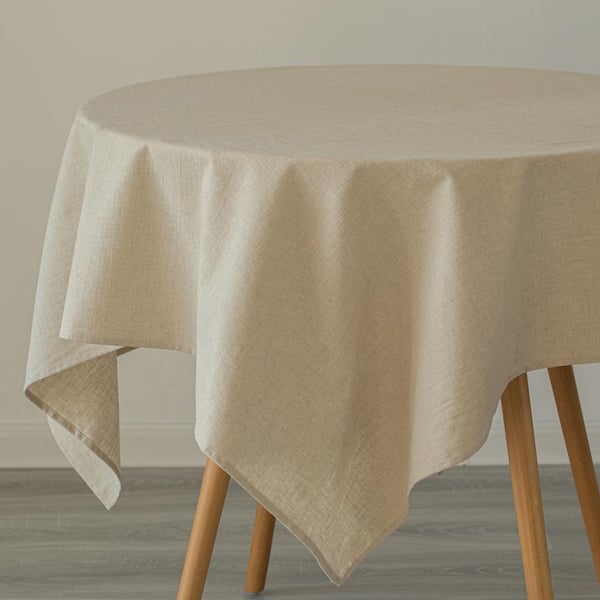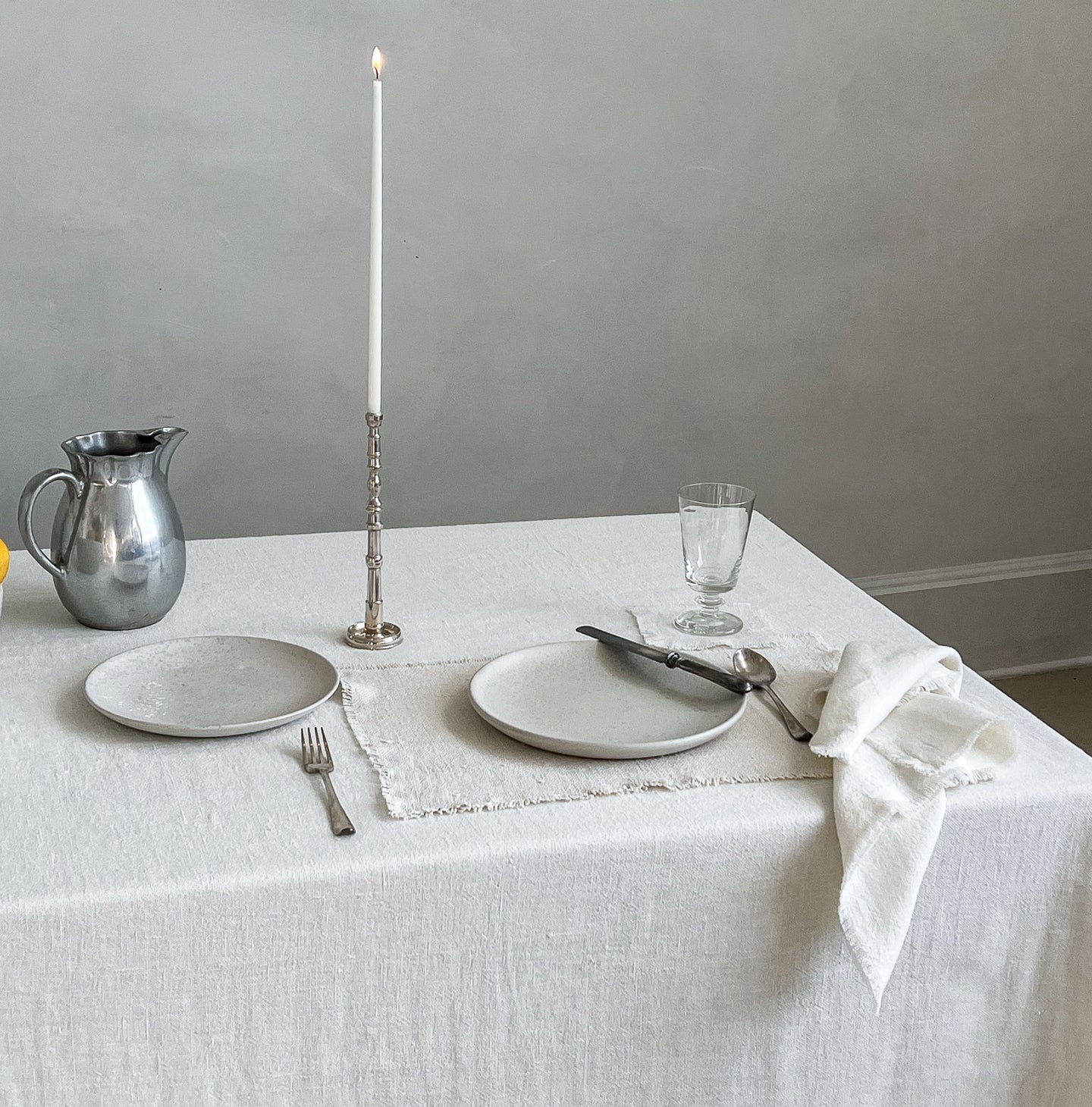Gorgeous Table Cloths: Enhance Your Dining Room Decor
Bed Linen Fabric: Recognizing the Beginnings, Features, and Advantages of This Glamorous Natural Product
Linen, the refined and elegant textile understood for its luxurious feeling and timeless allure, has a rich background that dates back centuries. Its beginnings can be traced to old people that prized its exceptional top qualities. Beyond its historic significance, bed linen possesses distinctive attributes that set it besides other fabrics, making it a popular selection on the planet of style and interior layout (flat sheet). Comprehending the benefits of this natural material exceeds plain aesthetics; it uses a range of benefits that accommodate both ecological and practical considerations. From its convenience in various applications to its sustainable production techniques, linen remains to influence and captivate.
Historical Roots of Bed Linen
Linen, a fabric with ancient origins, has actually played a substantial duty throughout background due to its remarkable residential or commercial properties and versatility. Dating back to old civilizations, linen has actually been a treasured textile for its phenomenal breathability, resilience, and glamorous feel. Making use of linen can be traced to ancient Egypt, where it was utilized for clothing, burial shadows, and also as a type of money. The old Greeks and Romans likewise valued linen for its comfort and style, frequently using it for garments worn by the wealthy elite.
In medieval times, linen remained to be extremely respected, with its manufacturing coming to be a considerable market in Europe. The convenience of bed linen made it a staple fabric for clothing, house products, and even sails for ships. Throughout the Renaissance, linen was more elevated in standing, with its usage in great garments and home bed linens representing wide range and social standing.
Unique Features of Bed Linen
Popular for its remarkable breathability and durability, bed linen textile boasts distinct attributes that have made it a preferred textile for centuries. One of the vital features of linen is its unequaled breathability, which permits air to stream via the fabric quickly. This building makes bed linen garments perfect for warm climate, as they help the body stay comfy and trendy. Furthermore, bed linen is recognized for its high absorbency, with the ability of wicking away moisture from the skin, making it optimal for summer season clothing.
Another distinctive feature of bed linen is its amazing strength. Despite its lightweight feel, linen is among the toughest all-natural fibers, making it extremely long lasting and resilient. Bed linen material likewise becomes softer and more comfortable with each laundry, improving its charm in time. Moreover, linen has a natural luster and a somewhat uneven structure that provides it a distinct, extravagant appearance. Its ability to stand up to dust and spots, together with its hypoallergenic buildings, better add to the appeal of linen as a costs material choice.
Benefits of Making Use Of Linen
With its remarkable breathability and sturdiness, linen material offers a plethora of benefits that make it a popular selection for different garments and home things. One of the key advantages of using linen is its breathability. Bed linen fibers are hollow and permit far better air flow, maintaining the body cool and comfortable in warm weather. In addition, linen is extremely absorbing, with the ability of taking in dampness without feeling moist, making it perfect for summer season garments.
Furthermore, linen is a long lasting textile that becomes softer and much more comfortable with each laundry, ensuring longevity and decreasing the requirement for constant substitutes. This longevity additionally reaches its resistance to moths and carpet beetles, making linen items less susceptible to harm contrasted to various other products.
Moreover, linen is a sustainable selection, as it is made from the flax plant, which calls for much less water and chemicals to expand contrasted to cotton. Its all-natural fibers are likewise naturally degradable, adding to eco-friendly practices. In conclusion, the advantages of utilizing bed linen include comfort, sustainability, resistance, and toughness to pests, making it a versatile and eye-catching choice for different applications.
Versatile Applications of Linen

Moreover, bed linen's versatility transcends the fashion market, locating its location in numerous home design things. Linen curtains bring a touch of underrated high-end to living rooms, allowing all-natural light to infiltrate while adding texture and deepness to the area. Linen bed linens is another desired choice, recognized for its breathability and ability to keep sleepers cool down in the summer season and warm in the winter months. Cushion covers, table linens, and also upholstery gain from bed linen's functional residential or commercial properties, including a touch of sophistication and convenience to any kind of home setup.
Sustainability in Bed Linen Manufacturing

In addition, linen is a naturally degradable material, guaranteeing that at the end of its lifecycle, it will naturally decompose without harming the setting. The sturdiness and longevity of bed linen items also contribute to sustainability by reducing the regularity of substitutes. Additionally, linen's all-natural protecting buildings can assist conserve power by keeping individuals cool down in hot climate and cozy in colder environments, potentially lowering the dependence on man-made heating and cooling down systems. Embracing bed linen as a sustainable selection in fabrics aligns with the expanding global focus on environmentally aware methods in numerous markets.
Conclusion
To conclude, linen material has an abundant historic history, distinct qualities, and many benefits. Its convenience in applications and sustainable production methods make it a highly popular product in numerous sectors. Bed linen's one-of-a-kind residential properties such as breathability, durability, and moisture-wicking abilities set it apart from various other textiles, making it a luxurious and practical choice for clothing, home textiles, and various other products. Generally, linen remains a timeless and environmentally pleasant alternative for consumers seeking top quality and sustainability.
Throughout the Renaissance, linen was more raised in status, with its usage in great garments and home linens representing wealth and social standing. (flat sheet)
Prominent for its phenomenal breathability and toughness, linen textile boasts distinctive attributes that have made it a popular textile for centuries.With its phenomenal breathability and sturdiness, bed linen fabric supplies a wide range of advantages that make it a prominent selection for various garments and household things. Pillow covers, table linens, and even furniture benefit from bed linen's functional properties, adding a touch of refinement and comfort to any type of home setup.
Linen's special properties such as breathability, toughness, and moisture-wicking abilities set it apart from other materials, making it a sensible and elegant option for apparel, home fabrics, and other click now products.